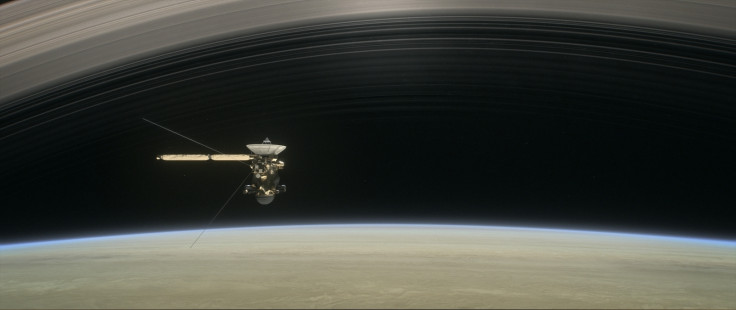Watch Cassini's death plunge: Spacecraft studying Saturn and its moons to end its 20-year voyage
Nasa will start a live video coverage of the event from 7 am EDT on 15 September.

One of Nasa's longest running missions, Cassini, will come to an end just after 6:32 a.m. EDT on Friday (15 September) as it heads toward the ringed planet's atmosphere.
Nasa will start a live video coverage of the event starting 15 September, Friday, 7 am EDT (11:00 am GMT). It can be watched on Nasa tv live. The end of the mission will be marked by the last stream of data that comes in 83 minutes after it is beamed from Cassini. That is expected to happen at around 7:56 am EDT (11:56 am, GMT). You can watch the event live here:
Technically it is not really possible to watch the spacecraft plunge and burn into Saturn as it is well over 1.2 billion km away and according to Business Insider report, Nasa also will not be able to use the Hubble to watch the plunge.
Cassini was first launched in 1997 and it reached the Saturn system around 2004 where it has stayed since, taking pictures and carefully studying the gas giant. It was the first mission that was launched to specifically study Saturn and was the first to go near enough to the planet to take detailed images since the Pioneer and Voyager crafts flew by it, several decades before it.
Among the many discoveries that Cassini helped scientists make was the presence of water on Enceladus.
In 2005, it was reported, observations of water jets that shot plumes of ice out of its atmosphere were made. The ice was feeding into the rings of the planet.
The BI report points out that Cassini flew through the geysers and confirmed that Enceladus has salty oceans beneath its surface.
Titan, another moon of Saturn, is now thought to also have a watery ocean beneath its surface.
"To find that there's an ocean world so tiny with a possibility of life , so far from the sun - 10 times farther from the sun than the Earth - has opened up our paradigm of where you might look for life, both within our own solar system, and in the exoplanet systems beyond," Linda Spilker , a Cassini project scientist and a planetary scientist at NASA JPL.
Cassini will continue to send images back to Earth till Thursday night, reports NGC and ping position till Friday morning.
Earl Maize, an engineer at NASA's Jet Propulsion Laboratory said: "We'll be saddened, there's no doubt about it, at the loss of such an incredible machine."
"But I think all of us have a great sense of pride ... We set out to do something at Saturn, we did it, we did it extremely well, and we delivered more and more. And we've left the world informed, but still wondering," he added.
© Copyright IBTimes 2025. All rights reserved.





















